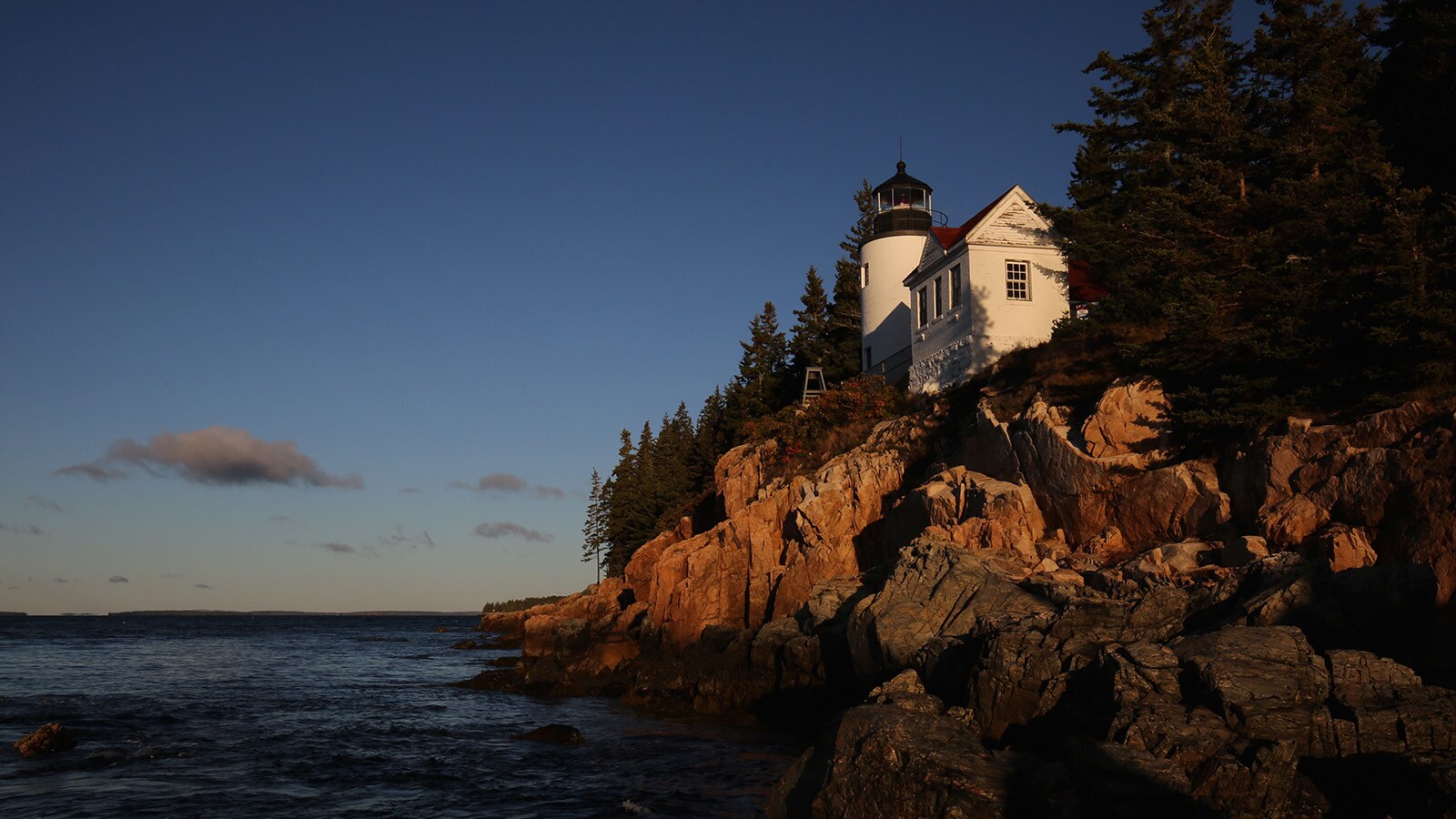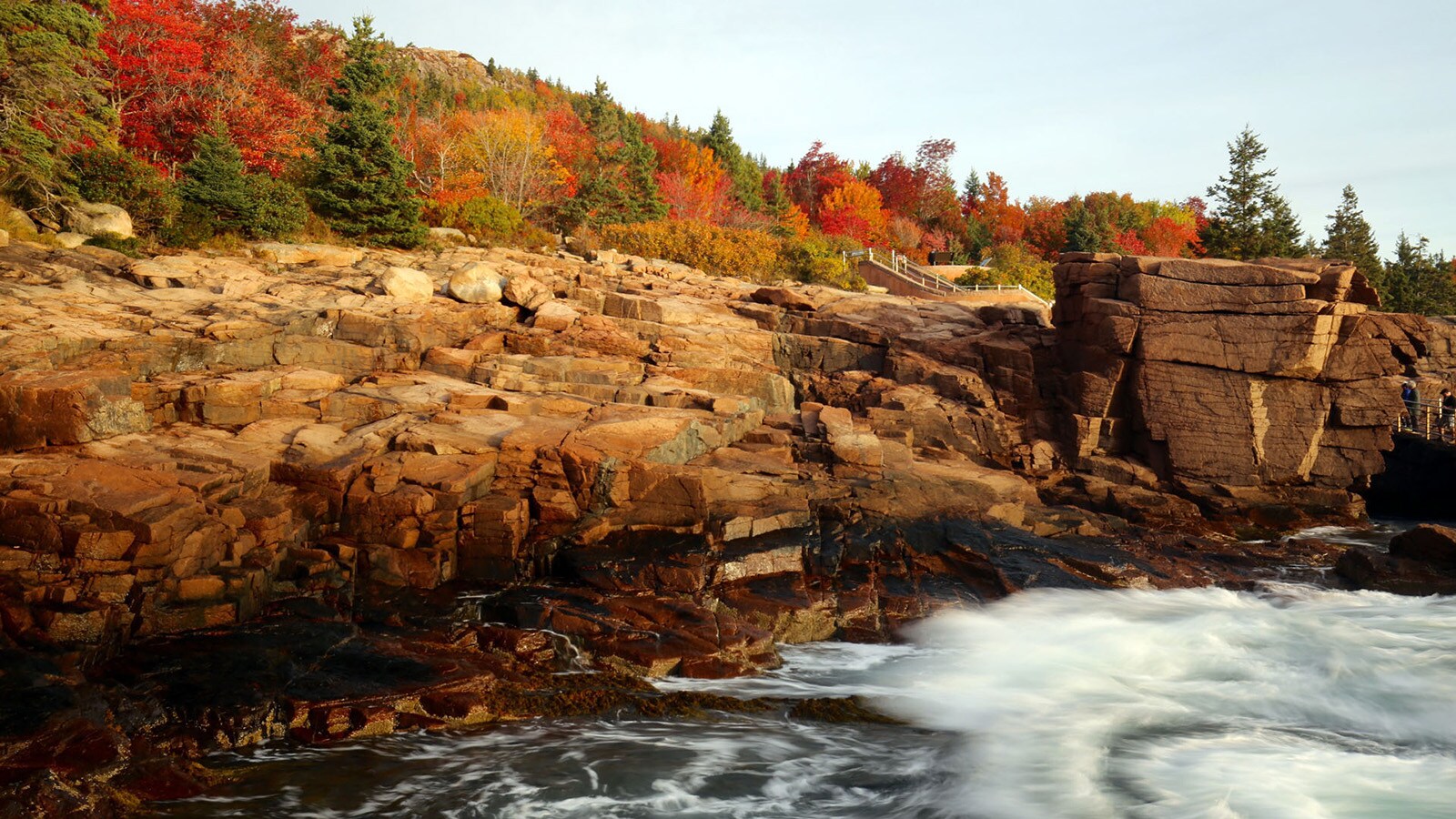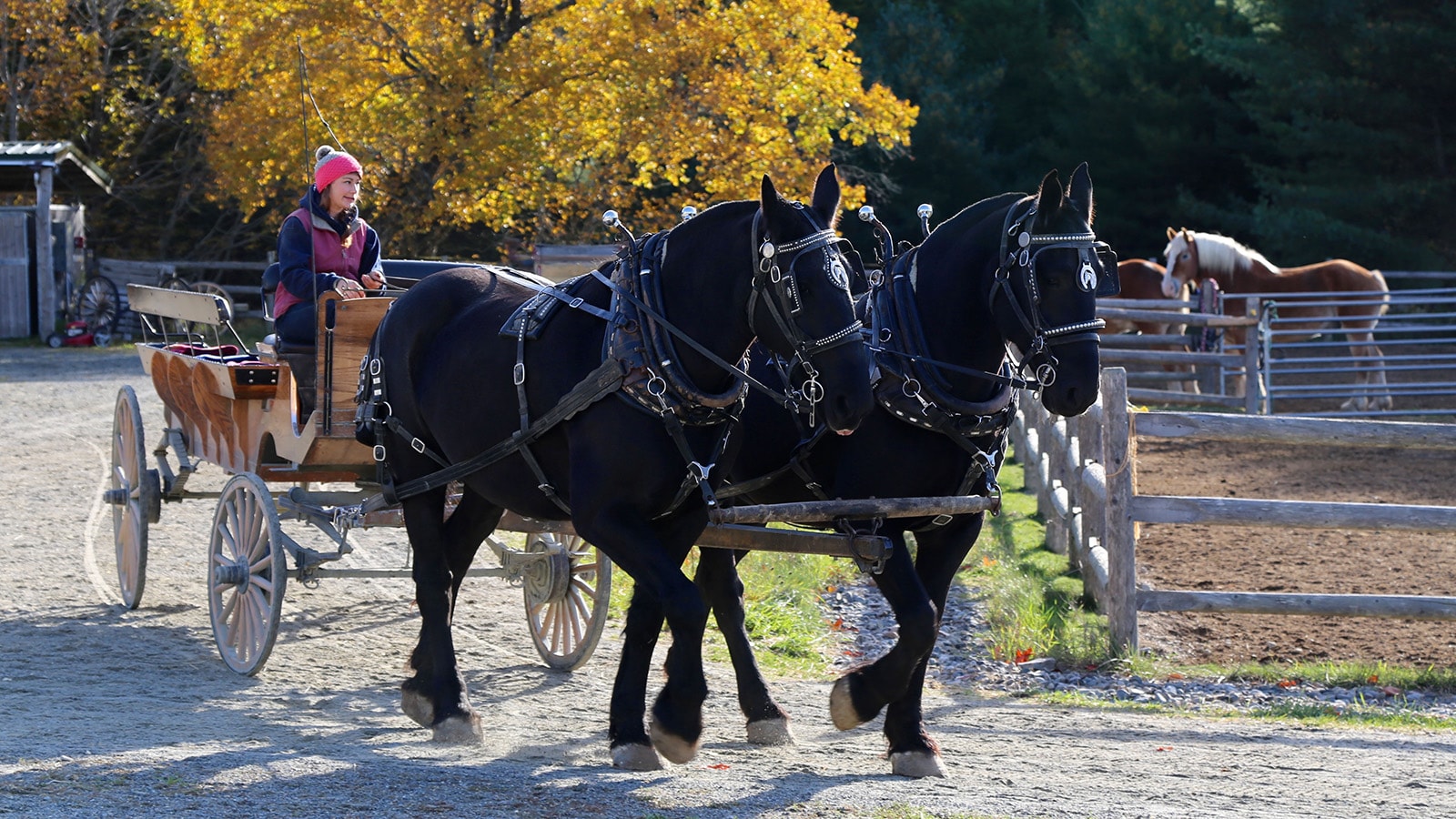Acadia National Park fuels photography passion

Story and photos by Charles Williams
Charles is a passionate travel writer and photographer who works for the Enterprise Brand Team. Email the author.
The only national park in the Northeast has stunning fall scenery and unique carriage roads.
Every photographer should experience autumn in the Northeast at least once. For me, it came much later in life than I had hoped, but it was worth the wait.
Riding in a horse-drawn wagon in Acadia National Park, I enjoyed the simple pleasure of photographing the trees. No traffic. No rushing. I heard only the methodical clopping of horse hooves, muffled by a canopy of deciduous trees — birch, beech, aspen and oak — all exploding with brilliant colour. The nostalgic ride was the highlight of my three days in the park in October.
The fifth smallest national park — but one of the 10 most visited — Acadia National Park is like a nested doll, with one brilliant layer opening to another until the heart and soul of the park is revealed: the carriage roads.
The park has 45 miles of carriage roads, and they distinguish Acadia from all other national parks. These roads were the vision of philanthropist John D. Rockefeller Jr., who oversaw their construction from 1913 to 1940. Rockefeller had the roads built so visitors would be able to explore the park by horse or in carriages. Cars still are not permitted.
Today, visitors hike, bike or take wagon rides on the roads. The popular horse-drawn wagon rides are booked months in advance, so if you are planning a trip to the park, book early. Along the carriage roads are 17 hand-built bridges, including the simple Cobblestone Bridge and the elaborate Duck Brook Bridge.
The scenery in Acadia is as varied as it is breathtaking. Along the eastern edge, waves on the Atlantic Ocean relentlessly crash into the unforgiving rocks. Farther inland, ponds and hiking trails provide a more serene respite.
Cadillac Mountain rises above it all. At 1,530 feet, Cadillac is the highest point on the eastern seaboard between Newfoundland and Rio de Janeiro. The summit is a popular place to take sunrise or sunset photos, and when the summit is covered in fog, somehow the photos are even more magical.
Exploring the Park
Photographers know that places are best explored on foot, when meanderings lead to unexpected vistas. Acadia has 150 miles of scenic hiking trails that allow you to slow down and create some lasting memories. If you have time, indulge your wanderlust.
Most visitors, however, will experience Acadia by driving the 27-mile Park Loop Road, which provides opportunities to stop at popular attractions. Along the way, Sand Beach lets kids frolic in the surf, Thunder Hole blows saltwater sky high and Otter Point provides unforgettable views.
Little Hunters Beach, a lesser-known stop, is one of my favorites. Descend the wooden staircase to a sheltered cove. As the water churns, you will hear granite rocks rolling in the surf — and that explains why the beach is covered with worn, rounded stones.
Make sure to visit historic Jordan Pond House, famous for tea and popovers. Slather the latter with butter and strawberry jam for an afternoon treat. Jordan Pond also is a starting point for wonderful hikes around the water or along the carriage roads.
Like all the national parks, Acadia can be overwhelmed by visitors. With nearly 3 million a year, traffic gridlock is often the result. The best way to combat the chaos is to seek alternatives to normal tourist routines, including avoiding busy days and times.
As a photographer, I liked to enter the park before dawn. In addition to capturing the soft hues of first light, I also had the park virtually to myself, an experience that’s not possible after noon.
The People's Park
When I capture a scene with my camera, I know the moment is fleeting. All landscapes transform by the hour, with the seasons and through the years. My ability to preserve a particular place at a particular time brings me joy, and the feeling is enhanced when I share that experience.
Acadia National Park was created in this same spirit of sharing. It was the first national park east of the Mississippi River and the only one in the Northeast. But more importantly, it was the first national park created by a community for the benefit of all.
Conservation-minded citizens such as Charles W. Eliot, the president of Harvard College, and George B. Dorr created a way for individuals to donate property that eventually became the park. This process is in contrast to many national parks that were created by government acts taken to preserve public lands. Today, the relationship between the park and the community continues through organizations such as Friends of Acadia, the Schoodic Institute and Eastern National.
No doubt these visionaries would be thrilled that people have embraced the places they also loved, from the charming nearby town of Bar Harbor to the idyllic Bass Harbor Head Lighthouse. I believe it would be hard to ask for a more scenic spot to photograph, especially in the fall.
Most national parks are in the West, where vast panoramas and dramatic formations dominate every landscape. But in this small park in the Northeast, less is definitely more.
Acadia National Park fuels photography passion
The only national park in the Northeast has stunning fall scenery and unique carriage roads.
San Francisco: A gateway to Yosemite National Park
An easy road trip takes you from a world-class city to a top national park.
Driving Through America the Beautiful
A trip from Denver to Montana shows off the vast and varied scenery in the U.S.
A Road Trip Through the Great Smoky Mountains
A national park and nearby parkway offer stunning views of the ancient Appalachians.
Utah’s Scenic Byway 12 is a Masterpiece
The All-American road traverses slickrock and features a petrified forest, a beautiful waterfall and gourmet dining.
Blown Away by Oregon’s Volcanic Legacy
Mount Hood, Smith Rock and Crater Lake are high spots of the state’s interior.
Hiking to the bottom of the Grand Canyon
Six family members immerse themselves in nature and attempt to bond.
Road trip to see waterfalls in Tennessee
A loose travel itinerary allows for discoveries around every turn.




















